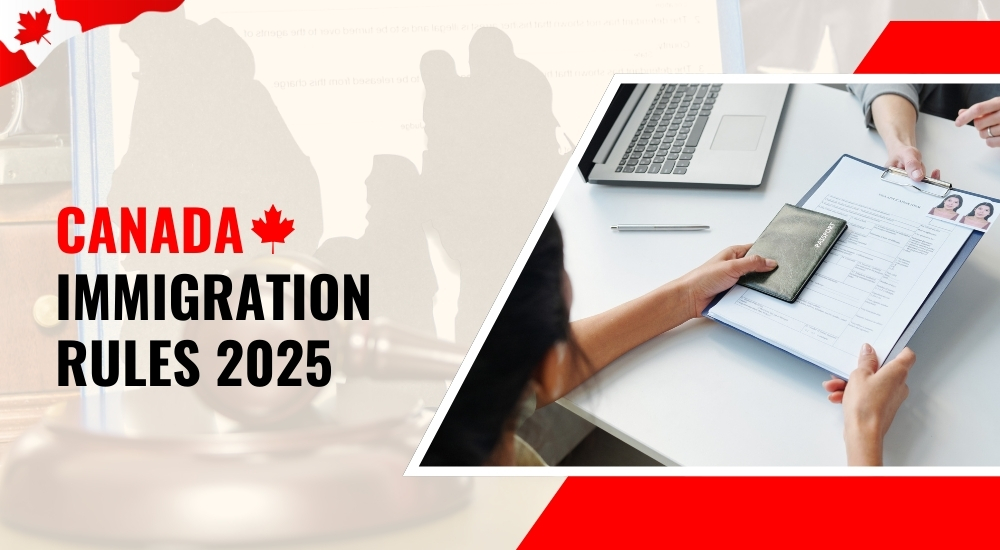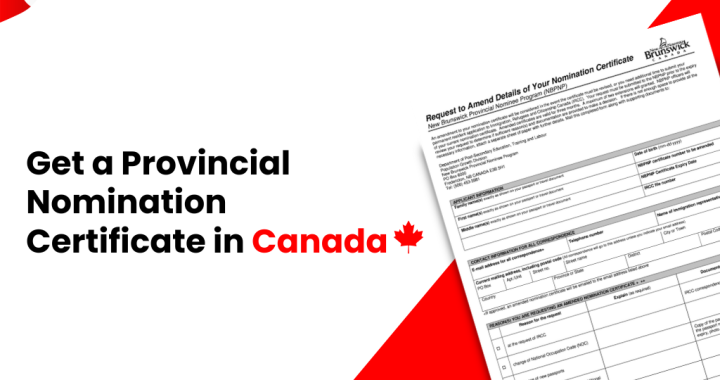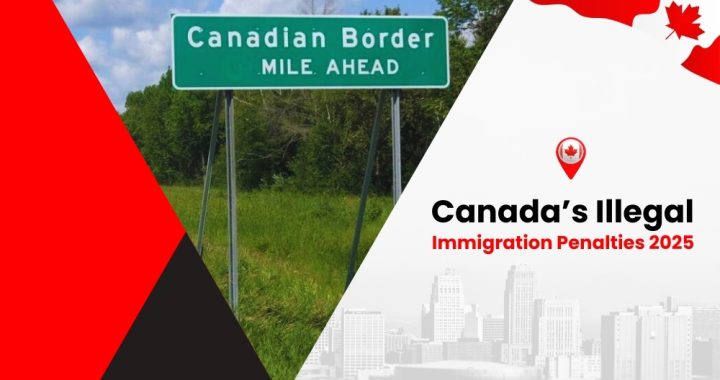
In 2025, Canada’s immigration framework will experience significant updates as outlined in the Immigration Levels Plan for 2025-2027, A transformative roadmap is detailed in this blog, “Canada Immigration Rules 2025: Your Complete Guide to New Policies”. This resource highlights key changes, such as a gradual reduction in permanent resident admissions aimed at easing pressures on housing, infrastructure, and social services while sustaining economic stability.
A Comprehensive Look at Canada’s 2025 Immigration Policies
As Canada continues to evolve its immigration policies, 2025 marks a significant year with various changes aimed at addressing economic needs, population growth, and public service capacity. Let’s have a look at Canada’s 2025 Immigration Policies, key changes in Canada’s immigration rules, new policies for permanent residency, temporary resident programs, and notable shifts in immigration policy.
Key Changes in Canada Immigration Rules for 2025
- Reduction in Permanent Resident Targets
The Canadian government has set a target of 395,000 new permanent residents for 2025, a reduction from previous years. This adjustment reflects a broader strategy to stabilize population growth and allow infrastructure and social services to catch up with demand. - Focus on In-Canada Applicants
Over 40% of permanent resident admissions are expected to come from individuals already residing in Canada, such as international students and temporary workers. - Stricter Eligibility for Spousal Open Work Permits
Effective January 21, 2025, spousal open work permits will be limited to spouses of international students enrolled in specific programs (master’s programs of 16 months or longer, doctoral programs) and spouses of foreign workers in high-demand occupations (TEER 0 or TEER 1).
New Rules for Permanent Residency in 2025
The new rules for permanent residency focus on economic priorities and labor market needs:
- Economic Admissions: A larger share of admissions will be allocated to skilled workers in critical sectors such as healthcare and skilled trades.
- Eligibility Criteria: Applicants must demonstrate that they possess skills that are in demand within the Canadian labor market.
Canada Immigration Rules 2025: Temporary Resident Programs
Temporary resident programs are also changing:
- Temporary Resident Caps: For the first time, the Immigration Levels Plan includes targets for temporary residents, including foreign workers and international students.
- Flagpoling Ban: Effective December 24, 2024, flagpoling—a practice where individuals leave Canada briefly to re-enter and apply for immigration services—will no longer be permitted for most temporary residents. Flagpoling refers to the act of exiting Canada to visit the U.S. or nearby territories solely to access immigration services upon re-entry.
Other Notable Immigration Policy Shifts for 2025
- Pause on Private Refugee Sponsorships
The Canadian government has temporarily paused private refugee sponsorships to reassess the system and ensure it meets current needs. - Enhanced Caregiver Pilot Programs
New caregiver pilot programs are being introduced to better support families needing care while ensuring that caregivers have clear pathways to permanent residency.
Impact on Various Sectors:
The changes in immigration rules will significantly impact various sectors:
- Truck Drivers and Skilled Trades: With a focus on skilled workers in critical sectors, truck drivers may benefit from streamlined pathways to permanent residency if they meet specific labor market needs.
- Healthcare Workers: Given the emphasis on healthcare occupations, professionals in this field may find more opportunities for immigration under the new rules.
How the New Rules Affect Various Categories of Applicants
The new rules will affect applicants differently based on their category:
- International Students: Students will have clearer pathways but may face restrictions on bringing family members unless they meet specific criteria.
- Temporary Workers: Those currently working in Canada may find it easier to transition to permanent residency due to the focus on in-Canada applicants.
- Families of Workers: The exclusion of dependent children from open work permits means families will need alternative strategies for keeping their children with them during their stay.
Specific Impact on Various Applicant Categories is as below:
- Truck Drivers:
Canada faces a shortage of over 17,000 truck drivers annually until 2025, projected to grow to 55,000 by 2035. This is driven by an aging workforce and economic needs. Truck drivers (NOC TEER 73300) are eligible for Express Entry following the NOC 2021 update, and several PNPs cater to this occupation, such as Saskatchewan’s Long-Haul Truck Driver Project and New Brunswick’s Skilled Workers Stream.
A job as a Truck Driver typically requires CLB 4 language proficiency and relevant work experience, with wages ranging from $25 to $38 per hour, depending on the province.
Impact: High demand offers significant opportunities, but applicants must navigate specific provincial requirements and potential processing delays due to reduced immigration targets.
- Other Sectors:
- Health Care and Trades: Professionals in these areas benefit from the economic focus, with Express Entry and PNPs prioritizing candidates to fill labor gaps. For example, nurses and electricians see increased pathways through category-based selection rounds.
- Technology: Tech professionals continue to benefit from fast-track options like the Global Skills Strategy, facilitating work permit processing for skilled workers.
How Will the New Rules for Spousal Open Work Permits Impact International Students and Their Families
The new rules for spousal open work permits (SOWPs) in Canada, effective January 21, 2025, will significantly impact international students and their families. These changes aim to streamline eligibility and align with labor market needs, but they also restrict access for many families who previously relied on dual incomes during their stay in Canada.
Key Changes to Spousal Open Work Permits
- Eligibility Restrictions for International Students
Under the previous rules, spouses of all international students could apply for an open work permit regardless of their partner’s program of study. However, the new regulations limit eligibility to spouses of students enrolled in specific programs:- Master’s programs that are 16 months or longer.
- Doctoral programs.
- Select professional degrees, such as Medicine (MD), Dentistry (DDS), and Engineering (BEng).
This means that spouses of international students pursuing undergraduate degrees or shorter master’s programs will no longer qualify for an open work permit, which could significantly reduce family income and support during their studies.
- Changes for Spouses of Foreign Workers
Similarly, the eligibility criteria for spouses of foreign workers have tightened. Now, only spouses of workers in high-demand occupations classified as TEER 0 or TEER 1 are eligible for SOWPs. Additionally, spouses of workers in TEER 2 and TEER 3 occupations may qualify only if their partner’s job is deemed critical to labor market shortages. A new requirement mandates that the principal worker must have at least 16 months remaining on their work permit at the time of application. - Impact on Dependent Children
A significant shift is that dependent children of foreign workers will no longer be eligible for open work permits under these new rules. This change could further complicate family dynamics and financial planning for those looking to settle in Canada.
- Eligibility Restrictions for International Students
Implications for International Students and Their Families
- Financial Stability: The restriction on spousal work permits will likely lead to financial strain for many families who had planned on dual-income support while studying in Canada. Families may need to explore alternative means of support or adjust their budgets significantly.
- Family Dynamics: The inability of spouses to work could affect family cohesion and emotional well-being, especially if one partner feels isolated or unable to contribute financially.
- Decision-Making for Prospective Students: These changes may influence potential international students’ decisions about studying in Canada, particularly those from countries where dual-income families are common.
- Need for Alternative Work Permits: Families affected by these restrictions can still explore other types of work permits available under Canada’s immigration system if they do not qualify under the SOWP criteria.
The new rules regarding spousal open work permits are going to create challenges for many families who rely on dual incomes to support their educational and living expenses in Canada. As prospective students plan their studies, understanding these implications will be crucial for making informed decisions about their future in Canada.
Frequently Asked Questions
What is flagpoling? How will the ban on flagpoling affect me if I'm a temporary resident?
Temporary residents can no longer use flagpoling for same-day services at the border, effective December 23, 2024. You must apply online to IRCC, which may take over five months, so plan accordingly.
For the unversed, Flagpoling is when temporary residents leave Canada briefly (often to the U.S.) and re-enter to access immigration services at a port of entry.
How many permanent residents will Canada accept in 2025?
Canada aims to accept 395,000 new permanent residents in 2025.
Who is eligible for spousal open work permits?
Only spouses of international students enrolled in specific long-term programs or those of foreign workers in high-demand occupations can apply.
What are the implications of the pause on private refugee sponsorships?
This pause allows the government to reassess the refugee sponsorship system’s effectiveness and adapt it to current needs.
What are the eligibility criteria for the new caregiver pilots?
Eligible home care workers need CLB level 4 in English or French, a Canadian high school diploma equivalent, recent relevant experience, and a full-time job offer, with applications opening March 31, 2025.
How can I sponsor my parents or grandparents in 2025?
New PGP applications are not accepted in 2025; only 2024 submissions are processed. Consider the Super Visa for extended visits up to five years.
Are there changes to the Express Entry system?
Express Entry prioritizes economic immigrants, with updates making occupations like truck drivers eligible and focusing on category-based selection for in-demand occupations.
How will the reductions in temporary resident targets affect international students?
International student permits are capped, with financial requirements increased to $20,635 and spouse work permits limited, potentially reducing opportunities for students.
As these policies take effect, prospective immigrants should stay informed and prepared for how these shifts may impact their applications and opportunities within Canada.

 How to Get a Provincial Nomination Certificate in Canada
How to Get a Provincial Nomination Certificate in Canada  Can Americans Work in Canada?
Can Americans Work in Canada?  How to Convert a Visitor Visa to a Work Permit in Canada
How to Convert a Visitor Visa to a Work Permit in Canada  Canada’s Illegal Immigration Penalties 2025
Canada’s Illegal Immigration Penalties 2025  PR Card Renewal in Canada: Steps, Fees & Eligibility
PR Card Renewal in Canada: Steps, Fees & Eligibility  How to Write an Support Letter for Immigration Canada
How to Write an Support Letter for Immigration Canada